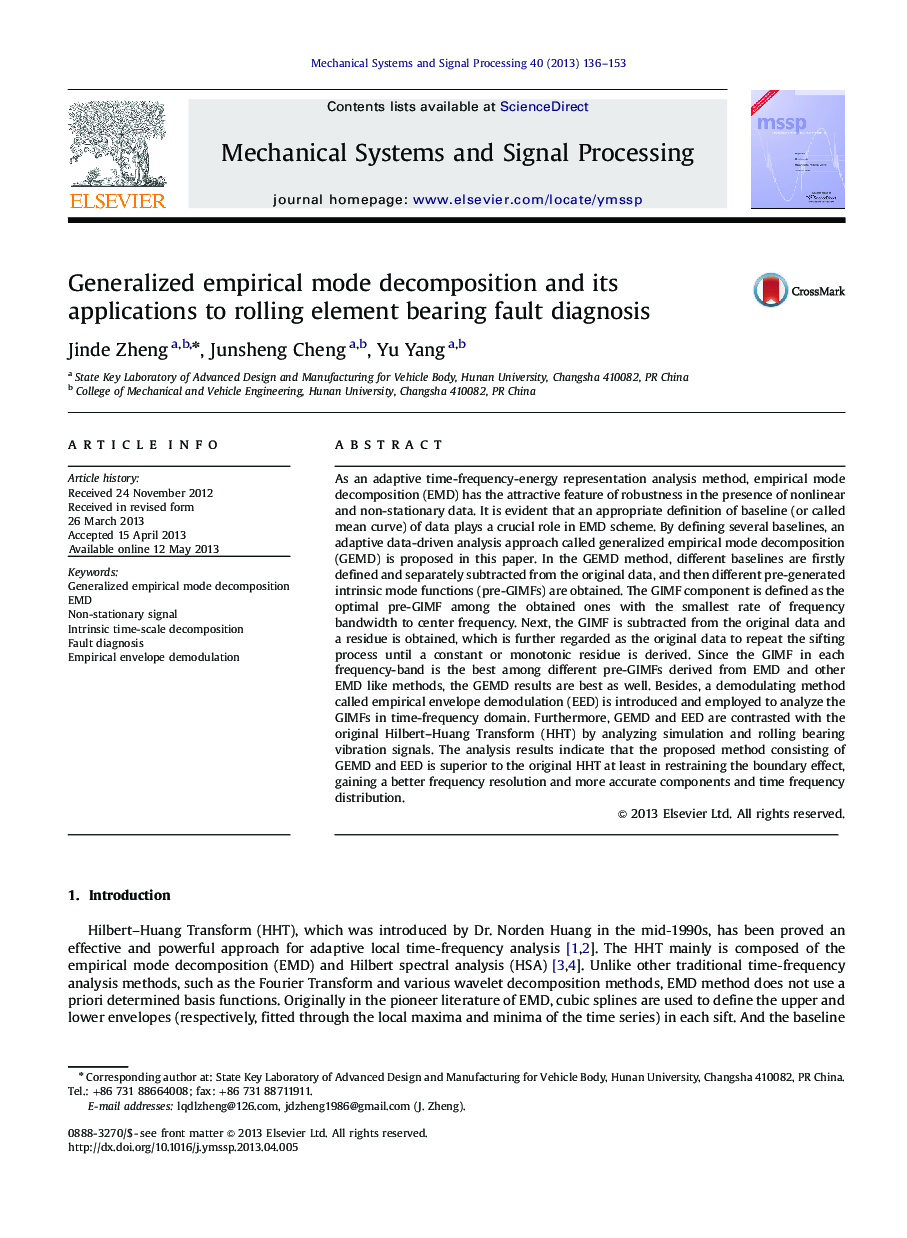| کد مقاله | کد نشریه | سال انتشار | مقاله انگلیسی | نسخه تمام متن |
|---|---|---|---|---|
| 561198 | 875285 | 2013 | 18 صفحه PDF | دانلود رایگان |

• A novel data analysis method named Generalized EMD is proposed for handling non-stationary signal.
• A demodulating method called the empirical envelope demodulation is employed to analyze GIMF.
• GEMD and empirical envelope demodulation are compared with the original HHT method.
• GEMD, EED and envelope analysis are applied to the rolling bearing fault diagnosis.
As an adaptive time-frequency-energy representation analysis method, empirical mode decomposition (EMD) has the attractive feature of robustness in the presence of nonlinear and non-stationary data. It is evident that an appropriate definition of baseline (or called mean curve) of data plays a crucial role in EMD scheme. By defining several baselines, an adaptive data-driven analysis approach called generalized empirical mode decomposition (GEMD) is proposed in this paper. In the GEMD method, different baselines are firstly defined and separately subtracted from the original data, and then different pre-generated intrinsic mode functions (pre-GIMFs) are obtained. The GIMF component is defined as the optimal pre-GIMF among the obtained ones with the smallest rate of frequency bandwidth to center frequency. Next, the GIMF is subtracted from the original data and a residue is obtained, which is further regarded as the original data to repeat the sifting process until a constant or monotonic residue is derived. Since the GIMF in each frequency-band is the best among different pre-GIMFs derived from EMD and other EMD like methods, the GEMD results are best as well. Besides, a demodulating method called empirical envelope demodulation (EED) is introduced and employed to analyze the GIMFs in time-frequency domain. Furthermore, GEMD and EED are contrasted with the original Hilbert–Huang Transform (HHT) by analyzing simulation and rolling bearing vibration signals. The analysis results indicate that the proposed method consisting of GEMD and EED is superior to the original HHT at least in restraining the boundary effect, gaining a better frequency resolution and more accurate components and time frequency distribution.
Journal: Mechanical Systems and Signal Processing - Volume 40, Issue 1, October 2013, Pages 136–153